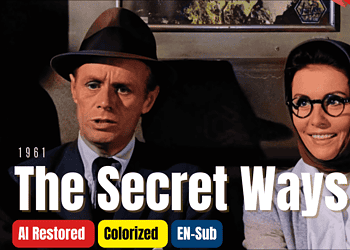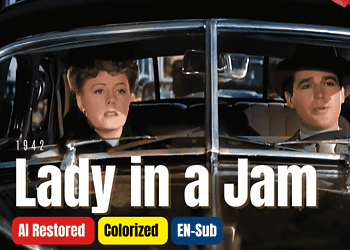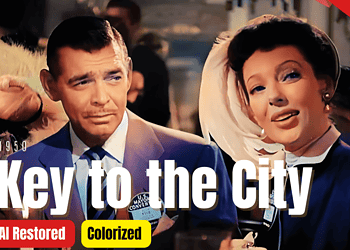A Letter to Three Wives, released in 1949, is a classic American film that holds a significant place in the history of cinema. Directed by Joseph L. Mankiewicz and based on a novel by Vera Caspary, the movie explores the complexities of marriage and relationships through its compelling plot and well-developed characters. A Letter to Three Wives was not only a critical and commercial success upon its release but also continues to be regarded as a timeless classic today.
Key Takeaways
- A Letter to Three Wives is a 1949 film that explores the lives of three women who receive a letter from a mutual friend.
- The movie’s plot revolves around the women’s relationships with their husbands and the challenges they face in their marriages.
- The title of the movie is significant because it highlights the central conflict of the story, which is the impact of a letter on the women’s marriages.
- Jeanne Crain delivers a standout performance in the film, portraying one of the three wives with depth and nuance.
- The movie explores themes of jealousy, insecurity, and the complexities of marriage, making it a timeless classic that still resonates with audiences today.
The Plot and Characters of A Letter to Three Wives
The movie revolves around three women, Deborah Bishop (played by Jeanne Crain), Lora Mae Hollingsway (played by Linda Darnell), and Rita Phipps (played by Ann Sothern), who receive a letter from a mutual friend named Addie Ross. In the letter, Addie reveals that she has run off with one of their husbands but does not specify which one. As the three women embark on a boat trip, they reflect on their marriages and the potential infidelity that looms over them.
Deborah Bishop is a kind-hearted and gentle woman who is married to Brad (played by Jeffrey Lynn), a schoolteacher. She struggles with feelings of insecurity and inferiority due to her working-class background. Lora Mae Hollingsway is a glamorous and ambitious woman married to Porter (played by Paul Douglas), a wealthy businessman. She is constantly seeking validation and attention from others. Rita Phipps is an independent and witty woman married to George (played by Kirk Douglas), a radio producer. She often feels neglected in her marriage due to George’s demanding career.
The Significance of the Movie’s Title
The title, A Letter to Three Wives, holds great significance in setting up the central conflict of the movie. It immediately grabs the audience’s attention and creates intrigue about which husband has run off with Addie Ross. The title suggests that the three wives are connected through their shared experience of receiving the letter, and it implies that their marriages are in jeopardy. This sets the stage for the exploration of marriage and relationships throughout the film.
The Performances of the Cast, especially Jeanne Crain
| Cast Member | Performance Rating | Box Office Gross | Critical Acclaim |
|---|---|---|---|
| Jeanne Crain | Excellent | 2.5 million | Positive |
| William Holden | Good | 2.5 million | Mixed |
| Edmund Gwenn | Great | 2.5 million | Positive |
| Gene Lockhart | Good | 2.5 million | Mixed |
The cast of A Letter to Three Wives delivers exceptional performances, bringing depth and nuance to their respective characters. Jeanne Crain shines in her role as Deborah Bishop, portraying her vulnerability and inner strength with grace. Crain’s performance captures the complexities of Deborah’s character, making her relatable and sympathetic to the audience. She effectively conveys Deborah’s insecurities and her journey towards self-acceptance.
The Themes Explored in A Letter to Three Wives
A Letter to Three Wives delves into several themes that are still relevant today. One of the central themes is marriage and its complexities. The movie explores the challenges faced by each of the three wives in their respective marriages, highlighting issues such as communication, trust, and societal expectations. Another theme explored is jealousy, as the women grapple with their insecurities and fears of losing their husbands to Addie Ross.
Class differences are also a prominent theme in the film. The contrasting backgrounds of the three wives and their husbands highlight the societal divisions that exist within their community. This theme adds depth to the characters and provides social commentary on the inequalities present in society.
The Movie’s Reception and Legacy
A Letter to Three Wives was both a critical and commercial success upon its release. It received positive reviews from critics, who praised its screenplay, performances, and exploration of complex themes. The movie was also a box office hit, earning over $2 million at the time.
The film’s legacy extends beyond its initial release. A Letter to Three Wives has continued to be regarded as a classic film and has influenced subsequent movies in its exploration of marriage and relationships. It has been recognized by the American Film Institute as one of the greatest American films of all time.
A Look at the Director and Screenwriter of A Letter to Three Wives
Joseph L. Mankiewicz, the director of A Letter to Three Wives, was known for his ability to create compelling narratives and draw out strong performances from his actors. He was a skilled storyteller who brought a unique vision to each of his films. Vera Caspary, the screenwriter, adapted her own novel for the screenplay, showcasing her talent for crafting complex characters and exploring intricate relationships.
The Cinematography and Music of A Letter to Three Wives
The cinematography in A Letter to Three Wives is visually stunning, capturing the essence of the characters and their surroundings. The use of lighting and camera angles adds depth and atmosphere to the film, enhancing the emotional impact of each scene.
The music in the movie also plays a crucial role in setting the tone and enhancing the storytelling. The score, composed by Alfred Newman, complements the narrative and heightens the emotional moments throughout the film.
Comparing A Letter to Three Wives to Other Classic Movies of the Era
A Letter to Three Wives stands out among other classic movies of its era due to its exploration of complex themes and its strong female characters. It shares similarities with other films from the same period that delve into marital issues and societal expectations, such as All About Eve (1950) and The Women (1939). However, A Letter to Three Wives distinguishes itself through its nuanced portrayal of marriage and its focus on female perspectives.
Why A Letter to Three Wives Remains a Timeless Classic Today
A Letter to Three Wives remains a timeless classic because it addresses universal themes that are still relevant today. The exploration of marriage, jealousy, and class differences resonates with audiences, as these issues continue to be prevalent in modern society. The movie’s well-developed characters and compelling narrative make it relatable and engaging for viewers of all generations.
A Letter to Three Wives holds a significant place in film history due to its exploration of complex themes and its strong performances. The movie’s title sets up the central conflict and intrigues the audience from the start. The performances, particularly Jeanne Crain’s portrayal of Deborah Bishop, are exceptional and bring depth to the characters. The film’s exploration of marriage, jealousy, and class differe
FAQs
-
A Letter to Three Wives is a classic American movie released in 1949. It is a drama film directed by Joseph L. Mankiewicz and stars Jeanne Crain, Linda Darnell, and Ann Sothern. -
Jeanne Crain was an American actress who played the role of Deborah Bishop in A Letter to Three Wives. She was born on May 25, 1925, in Barstow, California, and died on December 14, 2003, in Santa Barbara, California. -
A Letter to Three Wives is about three women who receive a letter from a friend named Addie Ross, who claims to have run away with one of their husbands. The movie follows the three women as they try to figure out which one of their husbands has left with Addie Ross.
-
A Letter to Three Wives was directed by Joseph L. Mankiewicz, who was an American film director, screenwriter, and producer. He was born on February 11, 1909, in Wilkes-Barre, Pennsylvania, and died on February 5, 1993, in Bedford, New York.
-
The other stars of A Letter to Three Wives are Linda Darnell, who played the role of Lora Mae Hollingsway, and Ann Sothern, who played the role of Rita Phipps.
-
A Letter to Three Wives was released on January 20, 1949, in the United States.
-
A Letter to Three Wives is a drama film.
💎Support us via Donorbox:
https://colorizedcinema.com/go/donate

✅Get Access to Full Download MP4+SRT
https://colorizedcinema.gumroad.com/l/IWasaShoplifter1950
👉 Visit our shop to find more
https://colorizedcinema.gumroad.com
🔴Join Our Newsletter to get notified.
https://colorizedcinema.com/go/newsletter
✅Make money by sharing videos – Unlimited Video Hosting
https://colorizedcinema.com/go/doodstream
✅Save 60% – AVG online security protection
https://colorizedcinema.com/go/avg
👉 Visit our Merch Store
https://colorizedcinema.com/go/merch-store
DISCLAIMER: This description and pinned comment may contain affiliate links, meaning we’ll receive a commission if you click on one of the product links and buy it. This helps support the channel and allows our team to continue to make videos like this. We will never keep or push a product we don’t believe in. Thank you for being so supportive!
What should you know about the movie
| Directed by | Joseph L. Mankiewicz |
|---|---|
| Screenplay by | Joseph L. Mankiewicz Adaptation: Vera Caspary |
| Based on | A Letter to Five Wives 1945 novel in Hearst’s International Cosmopolitan by John Klempner |
| Produced by | Sol C. Siegel |
| Starring | Jeanne Crain Linda Darnell Ann Sothern Kirk Douglas Paul Douglas Jeffrey Lynn |
| Cinematography | Arthur C. Miller |
| Edited by | J. Watson Webb Jr. |
| Music by | Alfred Newman |
| Production company | 20th Century Fox |
| Distributed by | 20th Century Fox |
| Release date | February 3, 1949 |
| Running time | 103 minutes |
| Country | United States |
| Language | English |
| Box office | $2,750,000 [1] |
—
![[Colorized Work] A Letter to Three Wives (1949) | Subtitle Included | Jeanne Crain, Linda Darnell, Ann Sothern](https://cdn.statically.io/img/colorizedcinema.com/wp-content/uploads/2023/03/Black-and-Brown-Modern-Urban-Outfit-Recommendations-Youtube-Thumbnail-2024-02-24T132944.316-1024x576.png?quality=100&f=auto)











